MED SURG II HESI (Elsevier) COMPLETE SOLUTION ( A+ GRADED 100% VERIFIED
Document Content and Description Below
1. Respiratory System 2. Renal System 3. Cardiovascular System 4. Gastrointestinal System (intestinal obstruction) 5. Endocrine System 6. Musculoskeletal System 7. Neurosensory System 8. Neuro... logic System 9. Hematology and Oncology 10. Reproductive System 11. Burns Downloaded by GEOFREY NGUGI ([email protected]) lOMoARcPSD|14331017 Endocrine System Hyperthyroidism (Graves’ Disease, Goiter) [Description] Excessive activity of thyroid gland Elevated T3 & T4 Increased rate of body metabolism Autoimmune process Etiologies: o Primary disease state o Use of replacement hormone therapy o Excessive TSH production Diagnostic: o Low TSH o High T3/T4 o Thyroid scan – goiter Treatment: o Medication: Propylthiouracil (PTU) Methimazole (Tapazole) o Thyroid ablation by medication o Radioactive iodine therapy o Thyroidectomy o Adenectomy – portion of the anterior pituitary where TSH is made is taken out o NOTE: all treatments cause hypothyroid = lifelong hormone replacement [Assessment] Enlarged thyroid gland (goiter) Acceleration of body processes: o Weight loss o Increased appetite o Diarrhea o Heat intolerance o Tachycardia, palpitations, high HP o Diaphoretic, wet, moist skin o Nervousness, insomnia Exophthalmos [Intervention] Observe for Thyroid Storm Teach: o After treatment, hormone replacement necessary o Diet: high calorie, high protein, low caffeine, low fiber diet Downloaded by GEOFREY NGUGI ([email protected]) lOMoARcPSD|14331017 o Perform eye care for exophthalmos Artificial tears to maintain moisture Sunglasses when bright light Annual eye exams Thyroidectomy o Check frequently for bleeding, irregular breathing, neck swelling o Support neck when moving client o Check for laryngeal edema (hoarsness) o Monitor Trousseau and Chvostek sign – removal of parathyroids [HESI Hint] Thyroid Storm o Uncontrolled hyperthyroidism 2/2 Grave’s disease o Life threatening o S/S: tachycardia, HTN, agitation, anxiety, fever o Priority = MAINTAIN AIRWAY PTU and Tapazole are treatment for thyroid storm Propranolol can be given to decrease sympathetic stimulation (BB) After thyroidectomy – possibility of laryngeal edema o Tracheostomy, O2, suction at bedside o Calcium gluconate – if parathyroid gland accidently removed Normal serum calcium: o 8.5-10.5 o Watch for decrease in calcium level – compare to pre-op value IF two or more parathyroid glands have been removed, chance of tetany increases o Monitor serum calcium levels o Check for tingling in toes/fingers/around mouth o Chvostek sign Twitching of lip after tap over facial nerve o Trousseau sign Carpopedal spasm after BP cuff is inflated above systolic pressure and held for 3 min Hypothyroidism (Hashimoto Disease, Myxedema) [Description] Hypofunction of the thyroid gland Low T3/T4 High TSH Treatment = thyroid hormone replacement (Levothyroxine) [HESI Hint] Downloaded by GEOFREY NGUGI ([email protected]) lOMoARcPSD|14331017 Myxedema coma o Decreased metabolism 2/2 lack of T3/T4 – causes heart muscles to become weak and the chamber size to increase -> low CO -> bradycardia -> shock state o Precipitated by: Illness, abrupt withdrawal of thyroid medication, anesthesia, use of sedatives, or hypoventilation o Airway patent & ventilator support as needed [Assessment] Fatigue Thin, dry hair, dry skin Thick, brittle nails Constipation Bradycardia Hypotension Goiter Periorbital edema, facial puffiness Cold intolerance Weight gain Slow speech Husky voice [Interventions] Teach: o Medication regimen o Take meds in morning before meals & no taking with other meds o Avoid food/products containing iodine o s/s of myxedema coma: hypotension Bradycardia Hypoventilation Hypothermia Hyponatremia Hypoglycemia Lactic acidosis Respiratory failure Develop bowel elimination plan – prevent constipation 3L/day of fluid intake High fiber diet – fruits, veggies Increased activity Little/no use of enemas and laxatives NO SEDATION – can lead to respiratory difficulties [Show More]
Last updated: 1 year ago
Preview 1 out of 39 pages
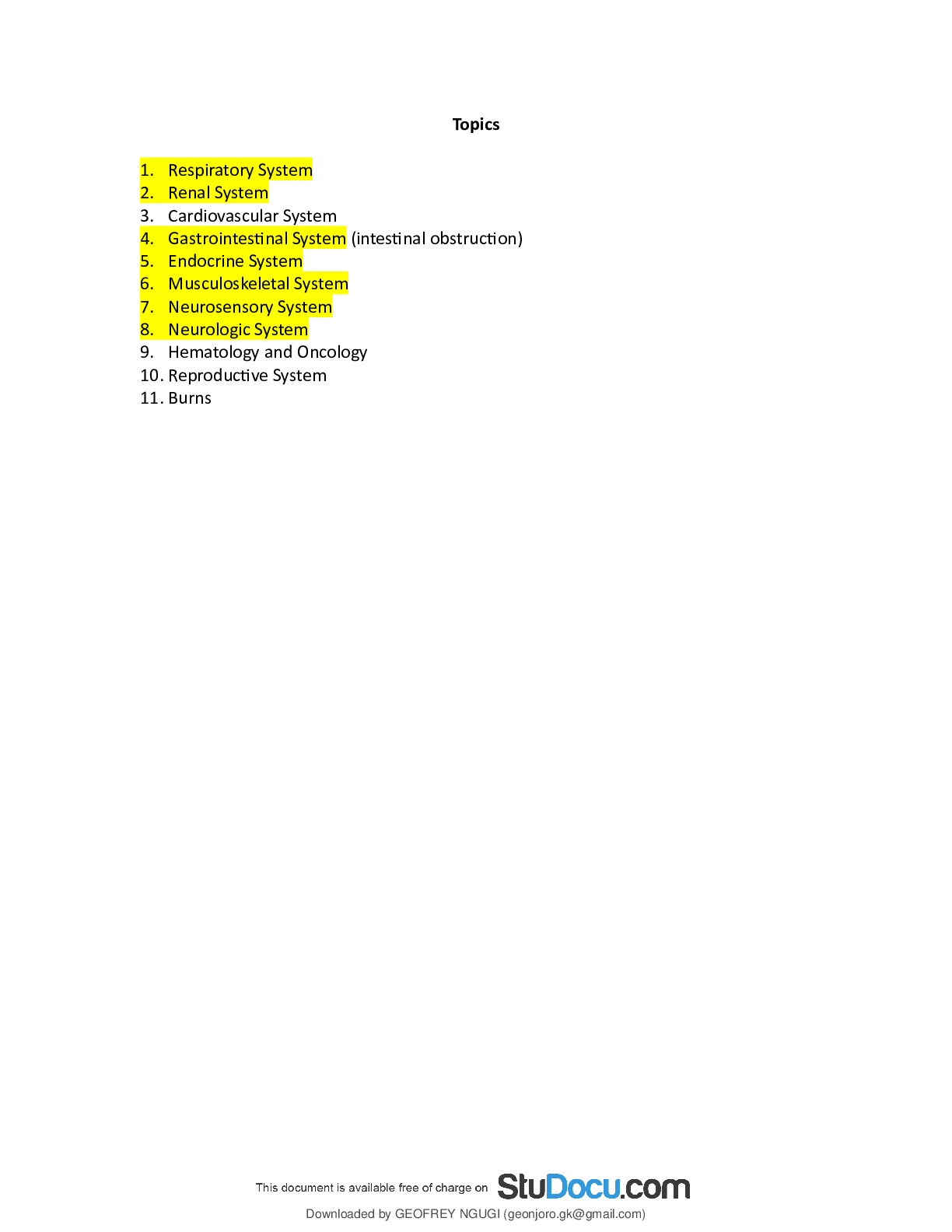
Also available in bundle (1)

HESI MED SURG COMBINED EXAM REVIEW MUST STUDY A+ GRADED LATEST REVIEW
Elsevier HESI Med-Surg Review Med Surg II - MASTER HESI Review Packet MED SURG HESI 3
By TESTPASS 1 year ago
$18.5
3
Reviews( 0 )
Document information
Connected school, study & course
About the document
Uploaded On
Feb 13, 2023
Number of pages
39
Written in
Additional information
This document has been written for:
Uploaded
Feb 13, 2023
Downloads
0
Views
56

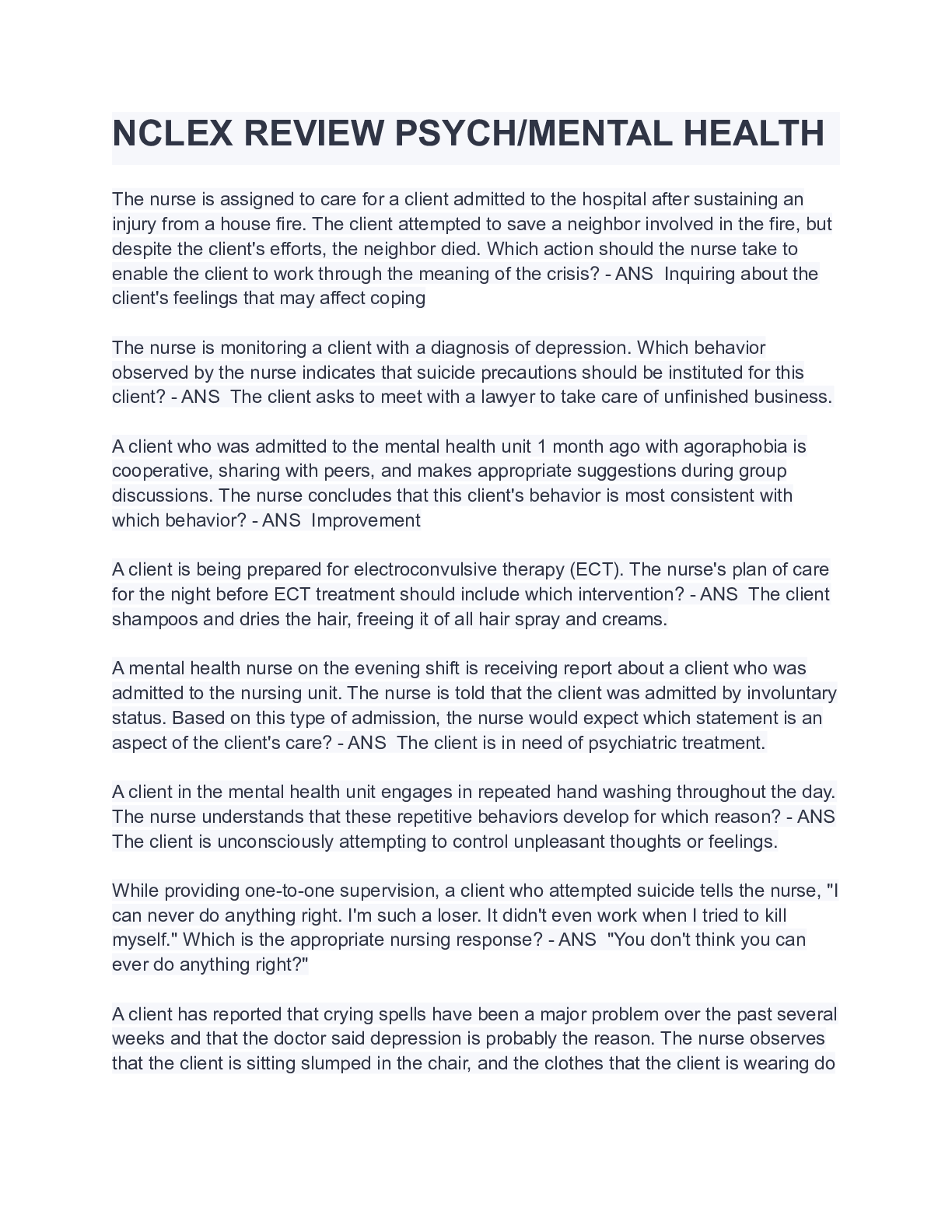
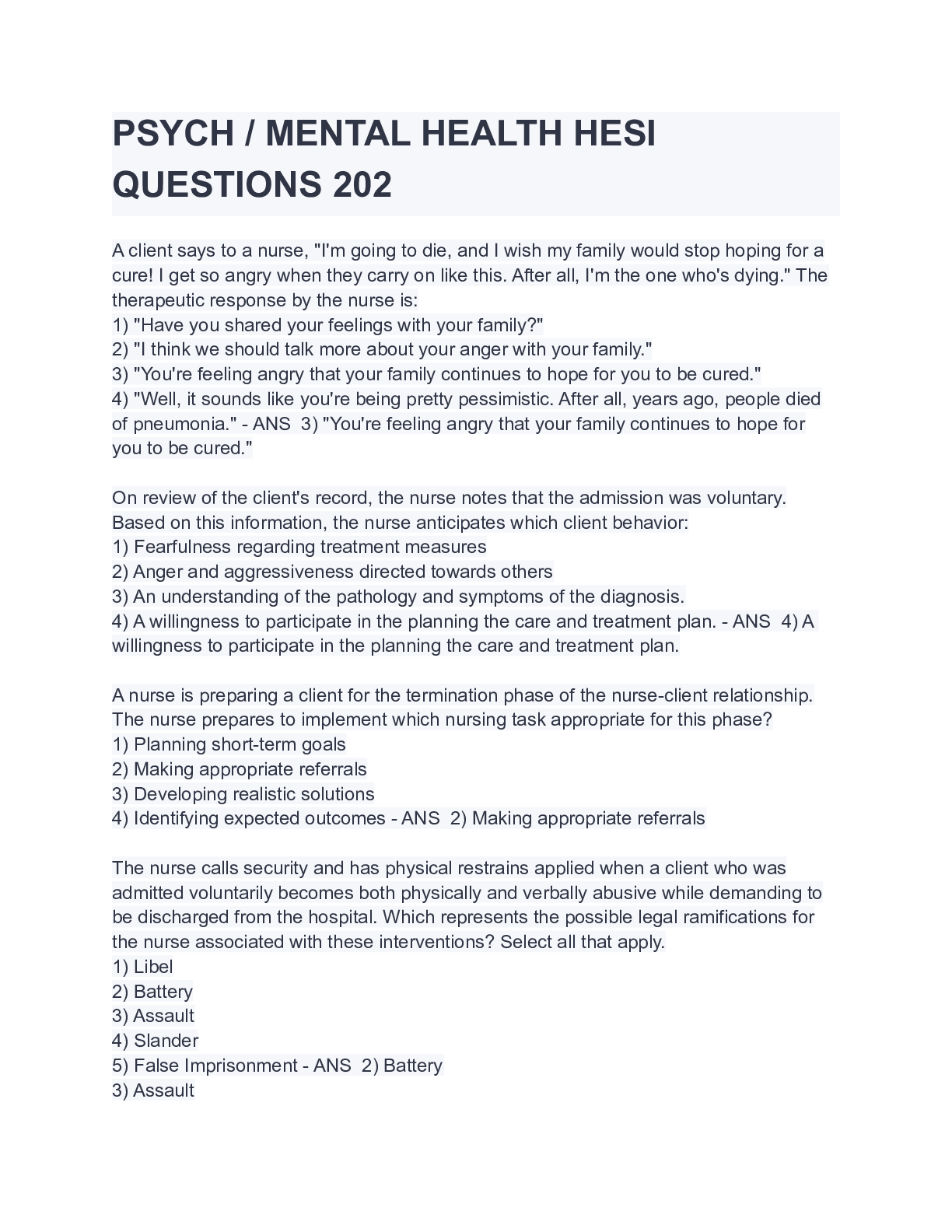
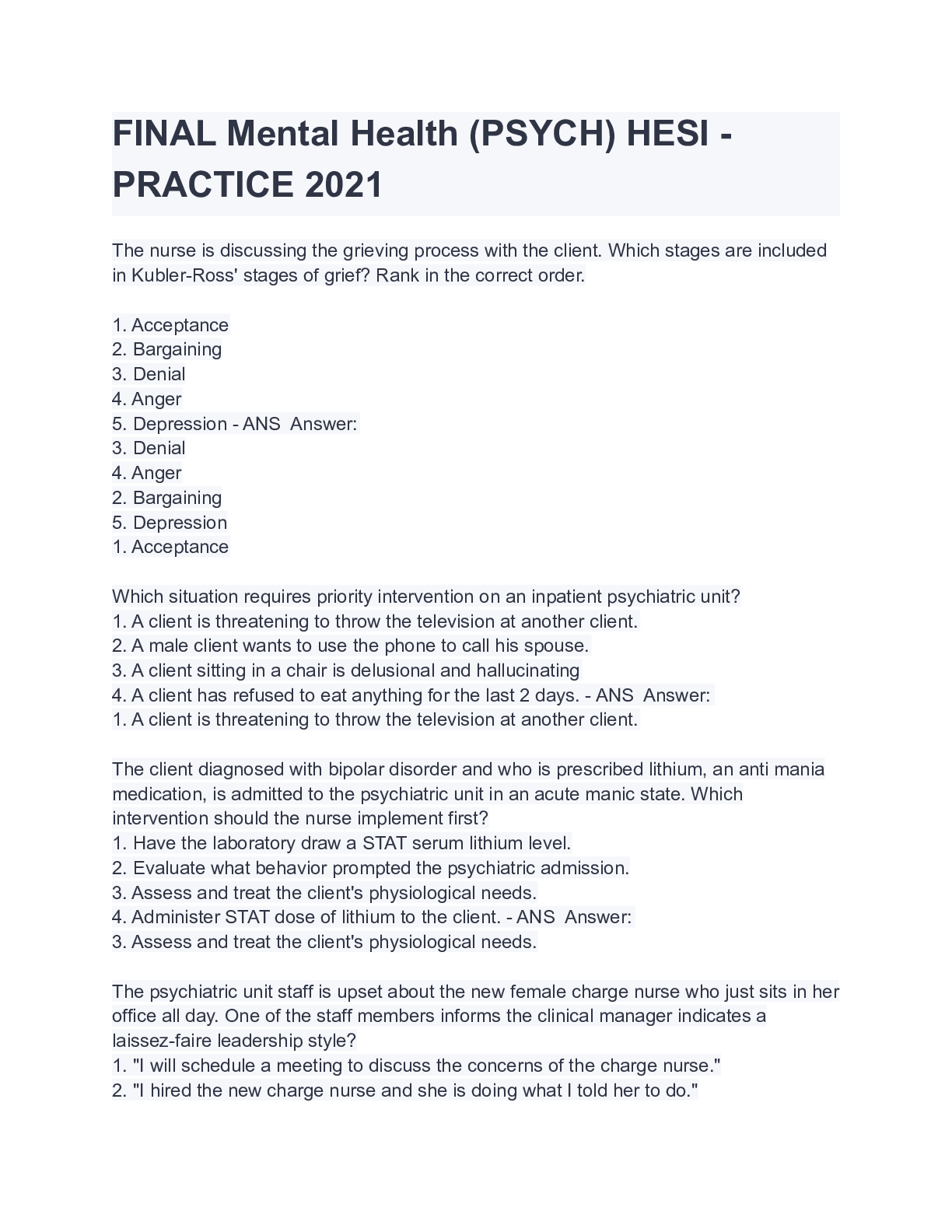

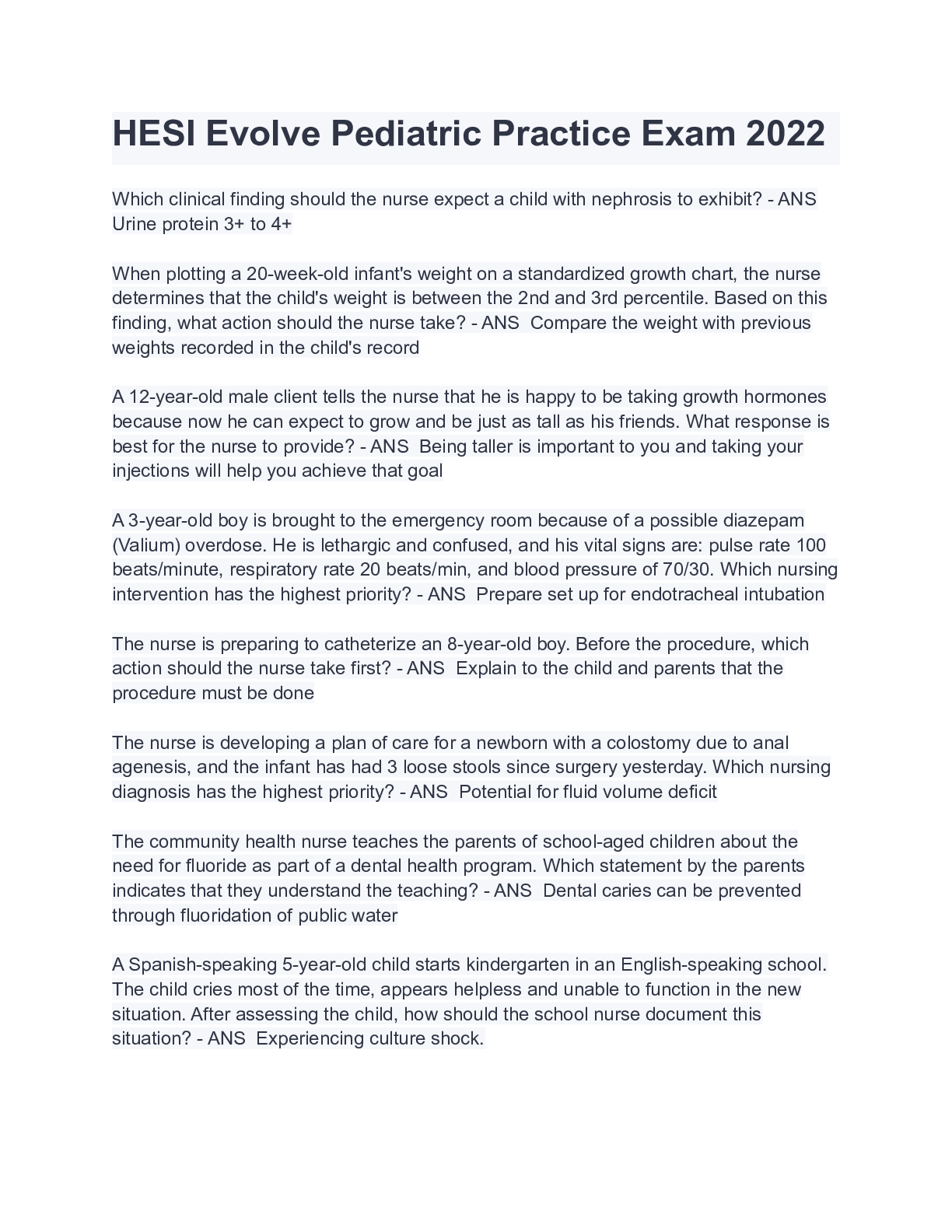


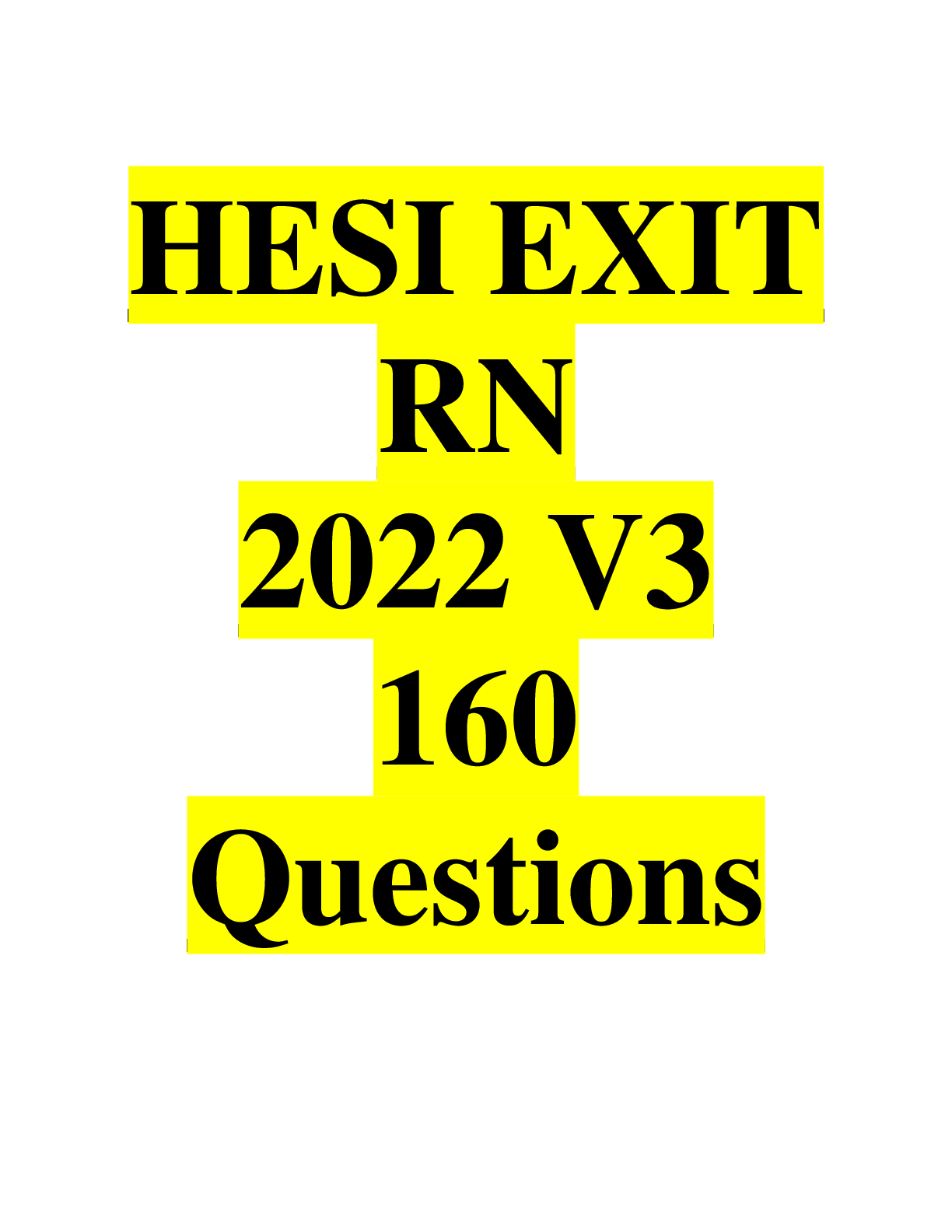

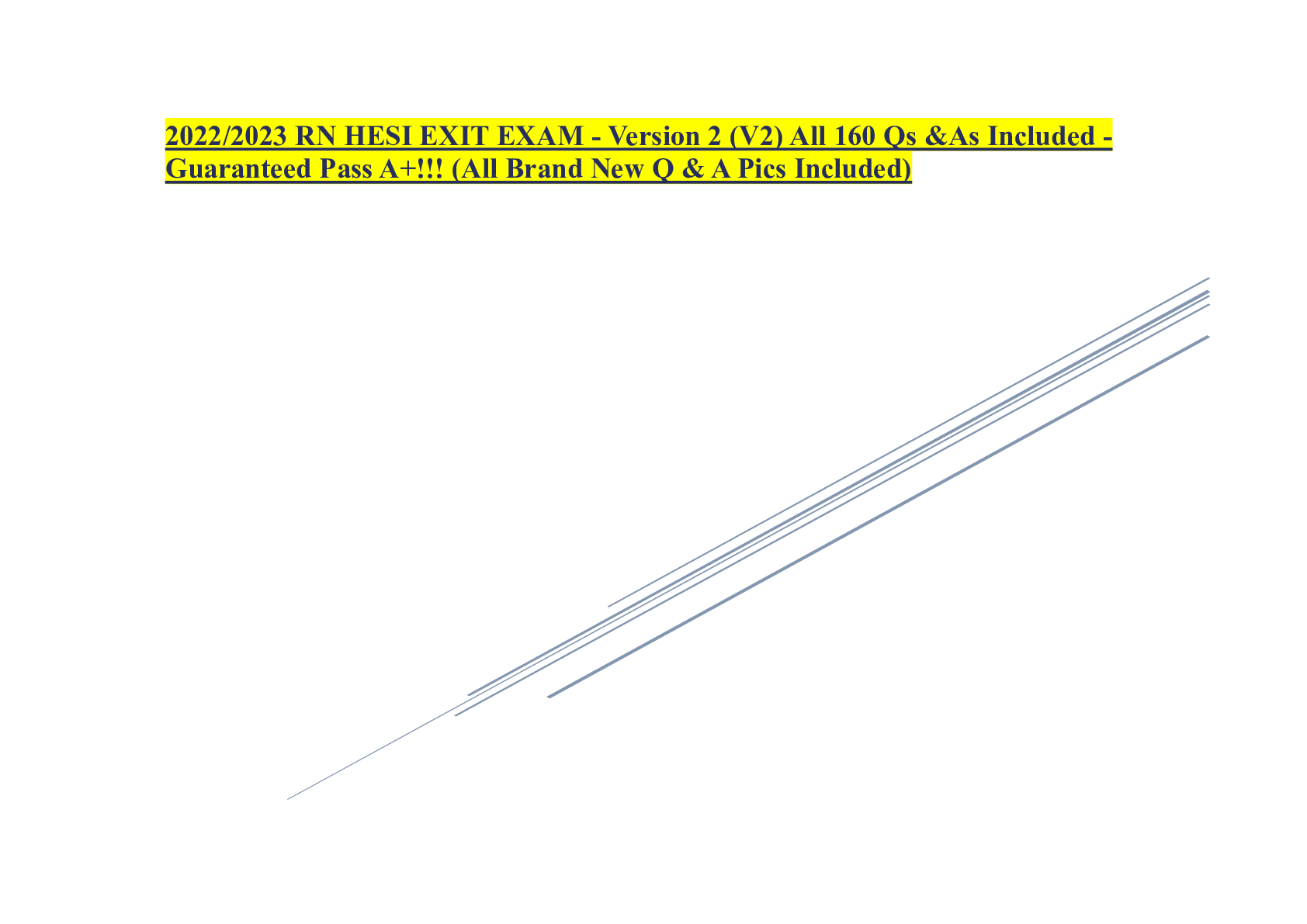
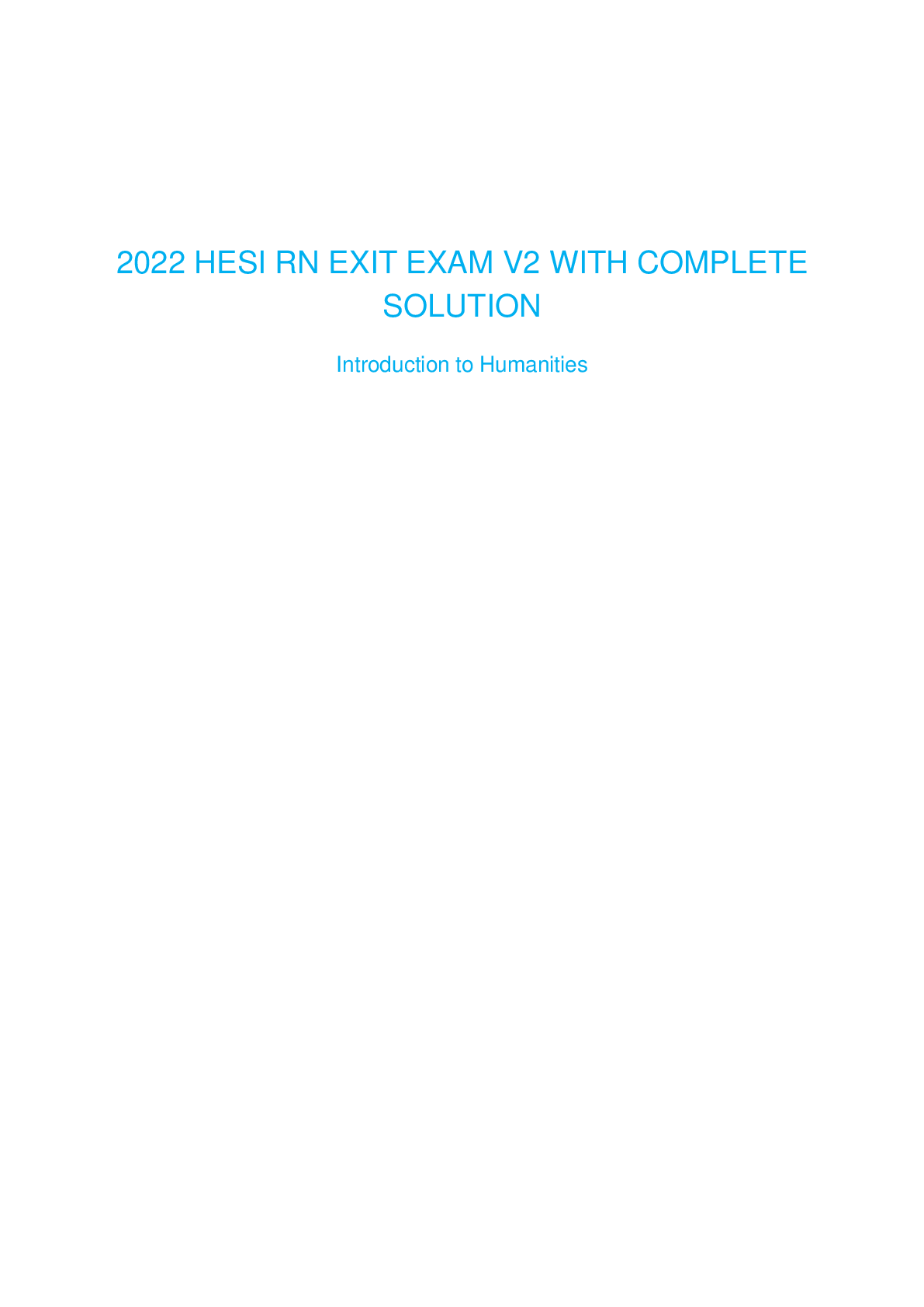

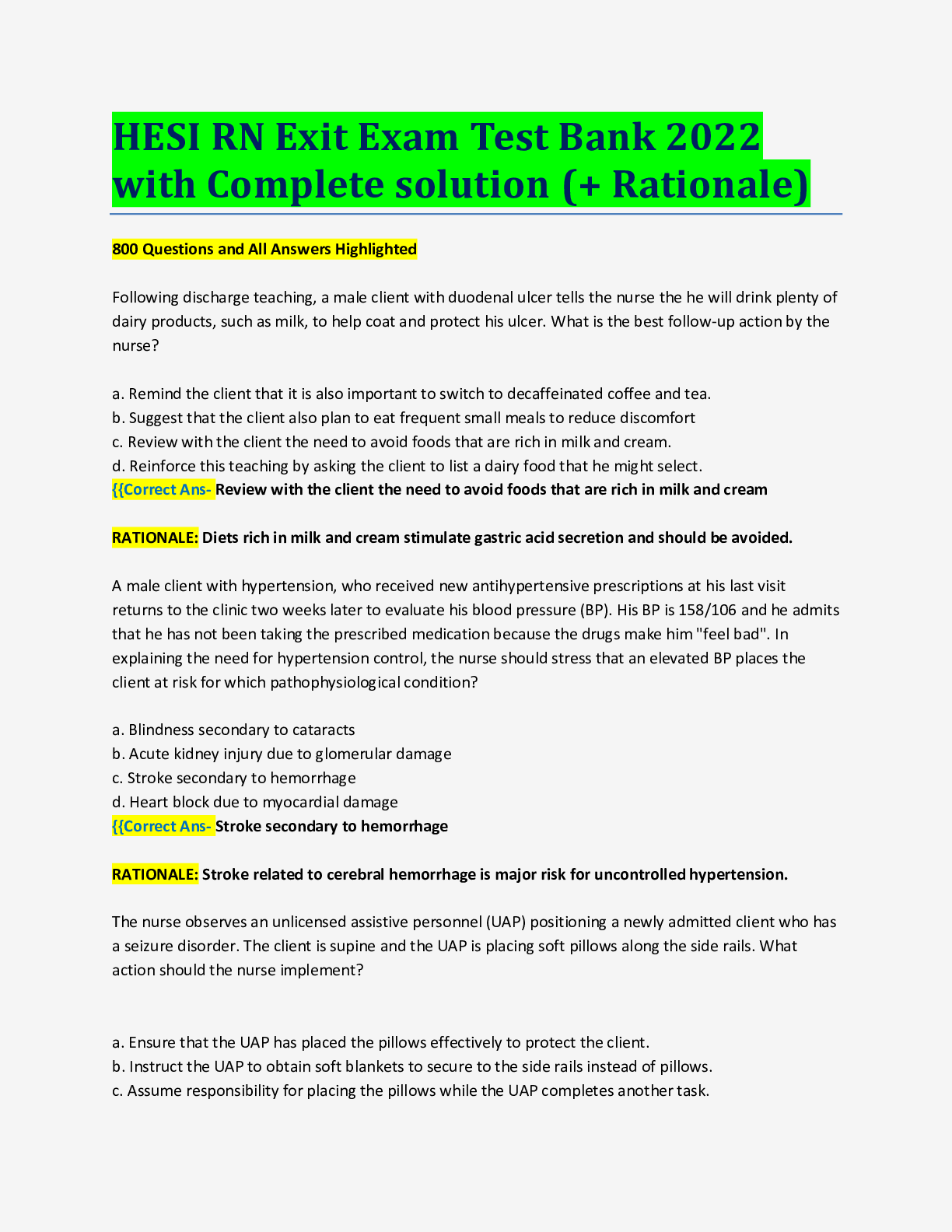





 (1).png)


